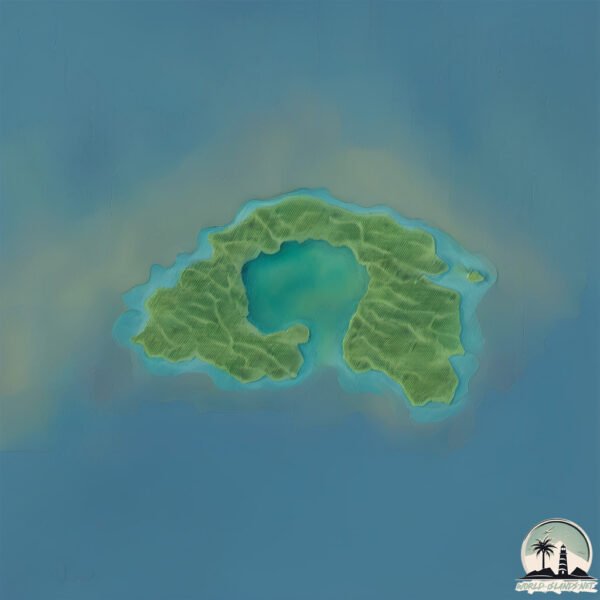Garove

Welcome to Garove, a Tropical island in the Bismarck Sea, part of the majestic Pacific Ocean. This guide offers a comprehensive overview of what makes Garove unique – from its geography and climate to its population, infrastructure, and beyond. Dive into the details:
- Geography and Size: Explore the island’s size and location.
- Climate and Weather: Weather patterns and temperature.
- Topography and Nature: Uncover the natural wonders of the island.
- Infrastructure and Travelling: Insights on reaching, staying, and making the most of your visit.
- News and Headlines: Latest News.
Geography and size of Garove
Size: 53.6 km²
Coastline: 59.8 km
Ocean: Pacific Ocean
Sea: Bismarck Sea
Continent: Oceania
Garove is a Medium Island spanning 54 km² with a coastline of 60 km.
Archipel: Melanesia – A subregion of Oceania in the southwestern Pacific Ocean, including countries like Fiji, Solomon Islands, and Vanuatu, known for their diverse cultures and languages.
Tectonic Plate: Somalia – A large tectonic plate covering the Horn of Africa and parts of the Indian Ocean, known for the East African Rift where it’s splitting away from the African Plate.
The geographic heart of the island is pinpointed at these coordinates:
Latitude: -4.67769186 / Longitude: 149.49429254
Climate and weather of Garove
Climate Zone: Tropical
Climate Details: Tropical Rainforest Climate
Temperature: Hot
Climate Characteristics: This climate is typified by heavy rainfall throughout the year, high humidity, and consistently high temperatures, leading to lush rainforests and rich biodiversity. Seasonal temperature variations are minimal.
Topography and nature of Garove
Timezone: UTC+10:00
Timezone places: Australia/Sydney
Max. Elevation: 302 m
Mean Elevation: 99 m
Vegetation: Evergreen Broadleaf Forest
Tree Coverage: 83%
The mean elevation is 99 m. The highest elevation on the island reaches approximately 302 meters above sea level. The island is characterized by Hills: Gently sloping landforms with rounded tops, having a maximum elevation between 200 and 500 meters. Hills contribute to a varied landscape on islands.
Dominating Vegetation: Evergreen Broadleaf Forest
Characterized by dense, lush canopies of broadleaf trees that retain their leaves year-round. These forests are typically found in tropical and subtropical regions and are known for their high biodiversity. Garove has a tree cover of 83 %.
Vegetation: 8 vegetation zones – Very Highly Diverse Island
Islands in this range are ecological powerhouses, showcasing a wide array of vegetation zones. Each zone, from lush rainforests to arid scrublands, coastal mangroves to mountainous regions, contributes to a complex and interdependent ecosystem. These islands are often hotspots of biodiversity, supporting numerous species and intricate ecological processes.
Infrastructure and Travelling to Garove
Does the island have a public airport? no.
There is no public and scheduled airport on Garove. The nearest airport is Hoskins Airport, located 127 km away.
Does the island have a major port? no.
There are no major ports on Garove. The closest major port is KIMBE, approximately 120 km away.
The mean population of Garove is 6 per km². Garove is Gently Populated. The island belongs to Papua New Guinea.
Continuing your journey, Unea is the next notable island, situated merely km away.
Papua New Guinea is classified as Developing region: Regions characterized by lower income levels, with economies in the process of industrialization and modernization. The level of income is Lower middle income.
News – Latest Updates and Headlines from Garove
Stay informed with the most recent news and important headlines from Garove. Here’s a roundup of the latest developments.
- Coastal Papua New Guinea uncloaked - Travel Weeklyon 3 March 2025
Coastal Papua New Guinea uncloaked Travel Weekly
- How to reach Luma Grove and Drakenhold Fortress in King Legacy - Pro Game Guideson 28 October 2024
How to reach Luma Grove and Drakenhold Fortress in King Legacy Pro Game Guides
- Ambitious upgrade of Limerick leisure centre to include gym and sauna - Limerick Liveon 27 September 2024
Ambitious upgrade of Limerick leisure centre to include gym and sauna Limerick Live
- CMC Group’s Vita at Grove Isle Tops Off Construction in Miami’s Coconut Grove Neighborhood - Miami's Community Newspaperson 5 September 2024
CMC Group’s Vita at Grove Isle Tops Off Construction in Miami’s Coconut Grove Neighborhood Miami's Community Newspapers
- Semi crushed in collision with Cottage Grove bridge near Grey Cloud Island - CBS Newson 30 July 2024
Semi crushed in collision with Cottage Grove bridge near Grey Cloud Island CBS News
- Cedar Grove Beach: A hidden gem with a century-long legacy | Then and Now - SILive.comon 19 July 2024
Cedar Grove Beach: A hidden gem with a century-long legacy | Then and Now SILive.com
- Paradise lost: Miami residents battle against developer blocking skyline and waterfront views - New York Poston 29 April 2024
Paradise lost: Miami residents battle against developer blocking skyline and waterfront views New York Post
- ‘It was heaven. It’s gone.’ Grove Isle residents say Miami broke laws to let tower rise - Miami Heraldon 28 April 2024
‘It was heaven. It’s gone.’ Grove Isle residents say Miami broke laws to let tower rise Miami Herald
- Furious millionaires slam developer for destroying gated private paradise island by building huge 91ft high lu - Daily Mailon 28 April 2024
Furious millionaires slam developer for destroying gated private paradise island by building huge 91ft high lu Daily Mail
- Construction Passes Halfway Point of CMC Group's Vita at Grove Isle in Coconut Grove - PROFILE Miamion 20 March 2024
Construction Passes Halfway Point of CMC Group's Vita at Grove Isle in Coconut Grove PROFILE Miami
Please note: The data used here has been primarily extracted from satellite readings. Deviations from exact values may occur, particularly regarding the height of elevations and population density. Land area and coastline measurements refer to average values at mean high tide.
